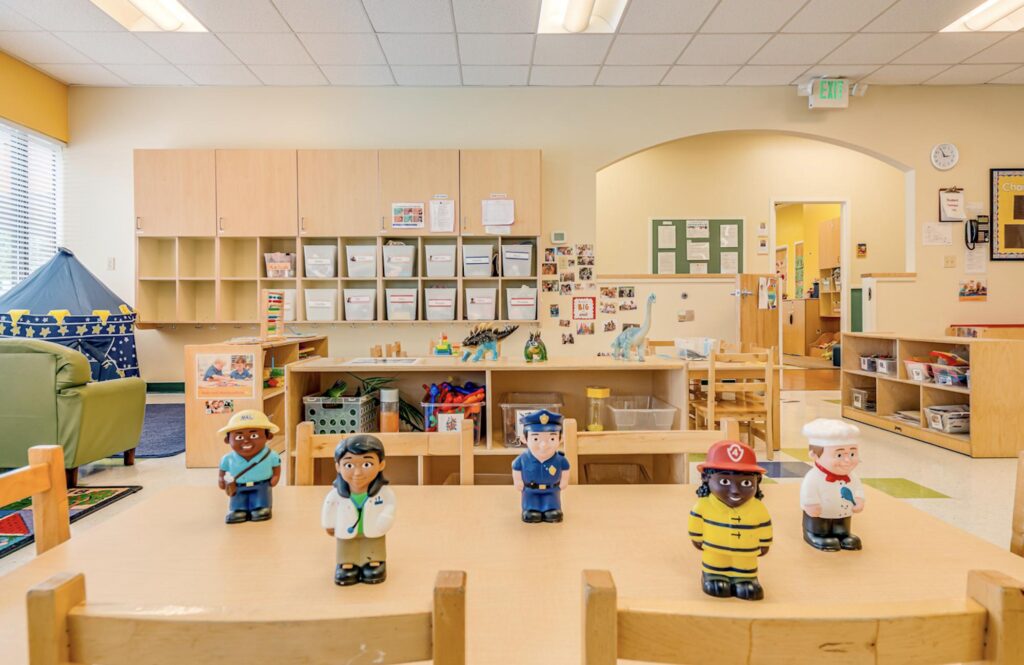When it comes to creating learning environments for children, safety should always be the top priority. As educators, parents, and caretakers, we have a responsibility to ensure that the spaces where children spend their time are secure and free from potential hazards. In this blog, we explore the critical role that children’s furniture plays in maintaining a safe environment for young minds to thrive.
Child-Sized Proportions: Children’s furniture is designed with the unique needs and proportions of young children in mind. Chairs, tables, and other pieces are appropriately sized to promote good posture, stability, and comfort. Furniture that is too tall, too heavy, or ill-fitting can lead to accidents, strains, or discomfort for children, compromising their safety and well-being.
Sturdy Construction: Children are naturally curious and often physically active. Furniture that is sturdy and well-built can withstand the energetic movements and occasional rough handling that children may exhibit. Ensuring that furniture is constructed from durable materials and properly assembled minimizes the risk of accidents caused by structural failures or tip-overs.
Non-Toxic Materials: Children are prone to touching, licking, and even biting objects they come into contact with. Therefore, it is crucial that children’s furniture is made from non-toxic materials, such as lead-free paints and finishes, and is free from harmful chemicals or substances that could pose a health risk. Choosing furniture that meets safety standards and certifications provides peace of mind for caregivers and minimizes potential health hazards.

Smooth Edges and Rounded Corners: Sharp edges and pointed corners can pose serious safety risks for children, increasing the likelihood of injuries, cuts, or bruises. Children’s furniture with smooth edges and rounded corners eliminates these potential hazards, creating a safer environment where children can move around freely without fear of accidental collisions.
Stability and Anti-Tip Features: Young children are naturally curious and often use furniture as support when exploring their surroundings. It is essential to select furniture that is stable and equipped with anti-tip features, such as anchoring mechanisms or wide bases, to prevent tipping accidents. These safety measures help maintain the integrity of the learning space and reduce the risk of injuries caused by furniture instability.
Secure Storage Solutions: Proper storage is essential to maintain a safe and organized learning environment. Children’s furniture should include secure storage solutions that prevent items from falling or tipping over, especially when accessed by children. Lockable cabinets or drawers help keep potentially hazardous materials, such as cleaning supplies or sharp objects, out of children’s reach, further enhancing safety.
Fire Retardant Properties: Fire safety is of utmost importance in any learning environment. Children’s furniture that complies with fire retardant standards significantly reduces the risk of fires spreading quickly and provides valuable time for evacuation or fire suppression. Investing in fire-resistant furniture ensures an additional layer of protection for children and caregivers.

The selection of appropriate children’s furniture plays a crucial role in creating safe spaces for children to learn and grow. By considering factors such as child-sized proportions, sturdy construction, non-toxic materials, smooth edges and rounded corners, stability and anti-tip features, secure storage solutions, and fire retardant properties, we can significantly minimize potential hazards and maximize the safety of children in educational settings. Prioritizing child safety through well-designed and safety-conscious furniture sets the stage for a secure and nurturing environment where children can flourish with confidence and peace of mind.

